


















Youngsters, I have two of those at home. Two boys. One aged 14 and the other one is 16. Luckily my teenagers meet the ‘standard profile’. The ‘now’ is important. ‘Later’ is far away. Friends, having fun and chilling out is what matters mostly. Moving about fanatically and then mucking about. Homework “sucks” and school is a total bore. Mainly due to the teacher being boring. “A Loser who cannot teach”. Who asks questions in a test about stuff that should not be learned. “That was the previous chapter!“. Teachers who understand ‘’it’’ teach the best. “Fun” is the magic word. All the rest is boring, is all about nothing and “they” just do not get it.
Group formation is essential for them. The group, their friends, are all-important. And parents are an entirely different group. In the eyes of my teenagers I am old, fat, bald and slow. Both physically and on the PlayStation. And this is surely not due to the fact that unlike some I am not gaming 6 hours a day.
Three years ago we built a conservatory to our house. This room is now the chill out zone for the lads. There are two old couches and the abovementioned PlayStation. And my drum kit. The boys are always there. Alone or with friends and girlfriends. Preferably with both the curtains and the door closed. They scarcely get out of there. Only to get crisps or soft drinks. They have a lot of fun there. And heaven forbid if I step in and want to play my drums. “Whoa, not now please. we’re busy.”
They like to chill out, a lot. And especially in places where there is space. A special place, such as a garage, a garden house or a separate room as in our case. A place that is equipped to chill out. Almost everyone has such a place at home. Meanwhile we have started to recognise a pattern. They mainly use the one place where the parents are not around. We also get the question weekly whether we have somewhere to go for the weekend. “Don’t you have someone to visit?“ And in the instances this occurs, there will be chilled out at our place. And are we at home, then there is always another house to hang out where parents are not around. They make an inventory each week where the parents have gone out and which places are attractive to go to.
Actually, it is all very simple. Adolescents are indeed special. They need their own place, one where they can discover, try things out and sometimes even be a true adult. They want a place without supervision from their parents who always correct them, warn them, are concerned or want to help out. They want need space to be with their friends, because they are important to them. They want our living room yet they do not want us to be there. We are not their friends. We are their parents. We are important to them, precisely by giving them the space they need. Not only at home, but also outside, in the public space. And with a bit of luck, I can play my drums in between their chill out time.
WIllem Butz
commercial director BOERplay
We have all been adolescent. We have all at some point disconnected from our parents. Looking for our identity and our place within the group. consistence, selfishness and a lack of empathy are among the least attractive features of an adolescent. They want to be taken seriously. They think they are already adult, can make their own decisions and can oversee everything. Unlike reality; their brains are still in their way.
“It is true, we really do not understand them anymore.”
Aletta Smits, Senior researcher at the University of Applied Sciences of Utrecht (NL)
The fine art is to choose what you do or do not worry about. Adolescents need boundaries. Limits that adolescents always want to stretch. Dealing with adolescents in practice means papering over the cracks, being strict, intervene, letting go, cuddling or keeping silent. There is no real manual, but understanding how an adolescent’s brain works certainly helps.
In the age phase of 10 to 25 years a lot changes with youngsters, both physically and emotionally. Around the tenth birthyear, children enter a new phase of life. They become adolescent and with that their
thinking, feeling and doing changes compared to their child phase. They separate themselves from the familiar home environment and look for new ties with peers. They make a big step from the trusted primary school in the neighbourhood to a secondary school, often further away. They end up with different types of education and the associated schools(communities). Existing groups of friends are split up and new groups are formed. A greater appeal is also made to the sense of responsibility of young people. Doing homework and learning requires more self-discipline.
A child develops at its own pace, but very quickly in puberty; they grow rapidly. It starts with the sexual maturation of the body. The body receives an extra dose of hormones that starts off puberty and the growth spurt. The growth of the body in weight, length and width.
also consumes lots of energy. Adolescents have a lot of appetite, can feel tired or slow and sometimes do not feel so well. Sometimes they are ashamed of certain physical characteristics that they already have and others do not yet.
In addition to the body, the brain of young people is in full development during puberty. The brain continues to grow until about the 25th birthyear. Brains consist of nerve cells and connections. The brain is changing rapidly during puberty. The road map that has been built up in childhood, the connections between nerve cells, is being re-structured. Old skills are no longer needed and new ones have yet to be learned and stored. These new connections are also thicker. With these new connections, the brain is gradually adjusted to an independent life.
“ Exercising is important for young people. It is good to have sports as an outlet after school and homework. That way they can lose their energy and it reduces the chance of getting overweight.”
Eventually, the shoulder width grows for boys, and the hip width for girls. This is something that the brain cannot always keep up with and as a consequence teenagers seem somewhat uncoordinated and lanky. Naturally this growth
During this change process the brain is very restless and sometimes even chaotic in the adolescent head. This provokes strong changes in behaviour and the motivation to do things.
These extreme mood swings get the upper hand and these alternate quickly. Through a lower impulse control there is less thought of the corresponding consequences. A situation or action seems okay at that instant, but the consequences for later cannot yet be assessed properly. The part of the brain that is involved in controlling impulses and weighing up risks is only developed around the twentieth birthyear. So there is a period when they do not think sensibly before doing something, but do look for risks.
During puberty, the thoughts and relationships of adolescents change. They think about everthing and discuss about it all. They start to act critical towards others, their parents included. They increasingly focus on people of their own age, gender and interests. The adolescent adapts to others by wearing the same clothes and listening to the same music. They share interests, find the same things important and behave in the same way. For some young people, the group of friends they belong to gradually becomes more important than their own parents.
This is why adolescents have continuous contact via social media, even with friends they have just seen. A good network of friends and girlfriends is good for self-confidence and give them a positive self-image.
Adolescents with many friends often feel happier. Friends know a lot about each other and support each other. They post everything on social platforms such as Facebook, Snapchat and Instagram. They often look for intense experiences. This is why they tend to expose a lot of themselves on social media. Research by Helen Vossen of Utrecht University (NL) shows that adolescents tell each other more via social platforms
The self-image of an adolescent depends on the ideas he has about himself, the ego ideal and self-esteem. Adolescents already have a good picture of their own character, think about how to deal with others and know pretty well how others think about them. However, they do not always pick up subtle expressions. This makes them feel that others feel negatively
“Self-esteem lies between self-image and self-ideal. This is the self-esteem. With a positive self-image the self-esteem is favorable: “It’s good that I am here.” Parents play an important role in this, but the role of peers and the environment is getting bigger and bigger. Through positive reactions from peers and the environment, adolescents feel accepted and appreciated. This promotes a positive self-image.” Aletta Smits, Senior researcher at University of applied sciences of Utrecht
than they would do in real life, mostly because digital contact feels safer due to the physical distance there is. This allows the bond between them to become stronger. Also, groups of friends have their own rules on social media. On Instagram you like almost every photo: more a sign that you have actually seen the photo, than that it is meaningful. The degree of relationship with the poster can be found via, for example, the location of a person’s tag, the types of reactions with emoticons or spamming a lot of reactions within a short time.
about them. Especially in tense situations, such as when an adult addresses to an adolescent about his or her behaviour in case of trouble.
For adolescents, the ego ideal, the inner image of oneself as one wants to become, is just as important as the selfimage. Peers are an example for each other, also in trying out behaviour. That way they can see what suits them and what does not. Adolescents can have idols that they want to imitate: “That’s how I want to be!”
Youngsters want to show themselves to the outside world, show that they have their own identity, experiment with their

Public space is a kind of transition zone for people on their way from home to work, school, shops or leisure. And vice versa. Young people are dependent on the public space to shape their free time. Young people are our future, but are generally considered as troublemakers and are often not understood or heard. Their presence in the public space can create tension with local residents and passers-by.
Hanging around in public space may seem futile, but it does have an important function. Young people balance on the border between childhood and adulthood. Between being dependent and becoming independent. The public space is a stage where young people develop their identity during this transition period. It is often the only place where they can meet with friends, without costing them money. The public space is a venue. Everything happens there. It is a place to observe people and situations and to come into contact with different values and norms. Young people here form their own social groups and learn social skills such as negotiating and dealing with conflicts. A place for such encounters is important.
From our collaboration with a few technasia such as the Fortes Lyceum from Gorichem, Helinium from Hellevoetsluis and Walburg from Zwijndrecht (all NL) we have frequent contact with the target group. The need for varied places, out of the sight of parents emerged clearly from the conversations with these youngsters. One of the pupils, Maarten (aged 15) simply summarised the needs of his peers: “What we want is a living room, without parents!”.
“What we want is a living room, without parents!”
Just like in a house, the location determines the success of a place for youngsters. A central location and the presence of facilities are important. Two types of spots are favorite. The first are so-called “Places of retreat”, places where there is less supervision compared to at home and school.
In these places they do not have to be seen by parents, or people who know their parents. These places give them a sense of freedom.
The second type of place are “Places of Interaction”. Varied and lively places where you can meet others, such as shopping malls, sports grounds or skate areas. These places are popular because of the liveliness and the presence of others. In these places young people come to meet friends and acquaintances.
By enriching these places with an own living room, we create a complete place for youngsters. A real OUR PLACE that meets the physical and social needs of the adolescent.
On january 1st 2017, the Netherlands had 4.9 million youngsters, of which 3.1 million in the beginning of 2017 aged between 10 and 25 years (18% of the population). This number will decrease in the coming years to just below 4.8 million by 2030. The number of young people with a migrant background will continue to grow. 16 percent of the minor youngsters live in a single-parent family. Youngsters leave the parental home at a later age and it takes longer before they settle down. At the start of 2017, about 90% of 18-year-olds still lived at home. For 24-year-olds, this share was less than 40%.

No matter how well the process of placemaking is going, a successful OUR PLACE is a place that young people continue to experience as positive. So they will continue to use the place in a positive way. OUR PLACE is valuable for the neighbourhood. The young people are visible there. They belong to the neighbourhood and also feel part of the neighbourhood. Which feels like THEIR neighbourhood. When designing OUR PLACE, we take both desired and undesired behaviour into account. We use the design guidelines of the internationally accepted CPTED approach.
CPTED stands for Crime Prevention Through Environmental Design. With clear guidelines on how the design of a built environment must be arranged to increase both objective and subjective safety. In principle, this does not involve heavy security measures. It concerns natural properties of the built environment that are used in the prevention of crime.
CPTED uses four perspectives for the development of a user environment: visibility, clarity, accessibility and attractiveness.
Visibility is about seeing and being seen. Good visibility contributes to social security, a natural surveillance. A feeling that the youngster considers just as important as the neighbourhood. In our view, good visibility also means recognisability. Who are the young people. Do I as a local resident already know them? When they sit there regularly, recognition arises and it becomes easier to talk to them and address them if they cause a nuisance.
The place must be recognisable as a place for youngsters. A good hangout is not a mess, but has a clear zoning, marking and boundaries, which again must meet the principle of visibility. The context partly determines the type of place. A sports field with an OUR PLACE living room has a different layout than one as part of a city square, or one as part of a skate park, or one as part of a schoolyard of a secondary school.
Accessibility is about the reachability of the place. The area perimeter of youngsters is big. Hangouts are often central places within the neighbourhood, such as a skate park or a sports cage. Accessibility with a bicycle or scooter is essential. Preferably from different directions (escape routes). Bikes and scooters must be parked directly at the spot. Parking is an integral part of the OUR PLACE concept.
OUR PLACE must also be easily accessible, just as a living room. Defined paths etc. are fun, but so called “elephant paths” show how the place is really used. Thinking logically about the actual use beforehand always pays off.
The success of a dedicated space depends on the attractiveness of the space itelf. The context of this space is important, just as the location. A place must be comfortable, with both high quality and robust materials. A place that appeals to the behaviour of young people. It is widely known that young people like to blend into groups. As in all groups, there is a hierarchy within a group of youngsters, as is clearly visible when youngsters sit together on a staircase. When designing a place for their own, we integrate these kinds of principles.
Youngsters are not all the same. A place must therefore be attractive for different types of people, as each of them use the public space in their own way on the basis of their own needs and preferences. We identify 4 types of people: strivers, discoverers, enjoyers and rest seekers. In each group these different types of youngsters are present. A place that appeals to each type of person is therefore automatically a place that appeals to the entire group. The group strengthen and correct each other. Adolescents educate each other. They learn and accept from each other.
The following starting points are the underlying vision of Placemaking:
1. The end users are the experts in the use of their space. Involve them early and continuously in the project. This can create a sense of community ownership.
2. You do not just design, but rather “make” a place together. Make people feel welcome and comfortable. “Where do you feel at home?”
3. You cannot do it alone, seek cooperation with those involved. Project partners are crucial for the future success and image of a project to improve public space; such as local institutions, museums, schools and others.
4. Observe! Through observation you will discover how the space is actually (not) being used.
5. Develop a vision on the use of space, make short and long-term goals.
6. Start with the flowers, in other words: see which fast and cheap improvements can be done quickly.
7. Form supports the use, not the other way around. Products in themselves are only products, but pu into a certain composition they are more than the sum of their parts.
8. People always say things are impossible, but do not let that stop you. Start with small-scale improvements in shared environments. This can demonstrate the importance of ‘places’ and help overcome obstacles.
9. Create multiple functions and combinations that stimulates additional use.
10. Finance is not a determining factor. Finance follows vision.
11. You are never finished. The environment and its users will always change subject. Management and administration together form the key to a good public space that meets the needs of the environment.
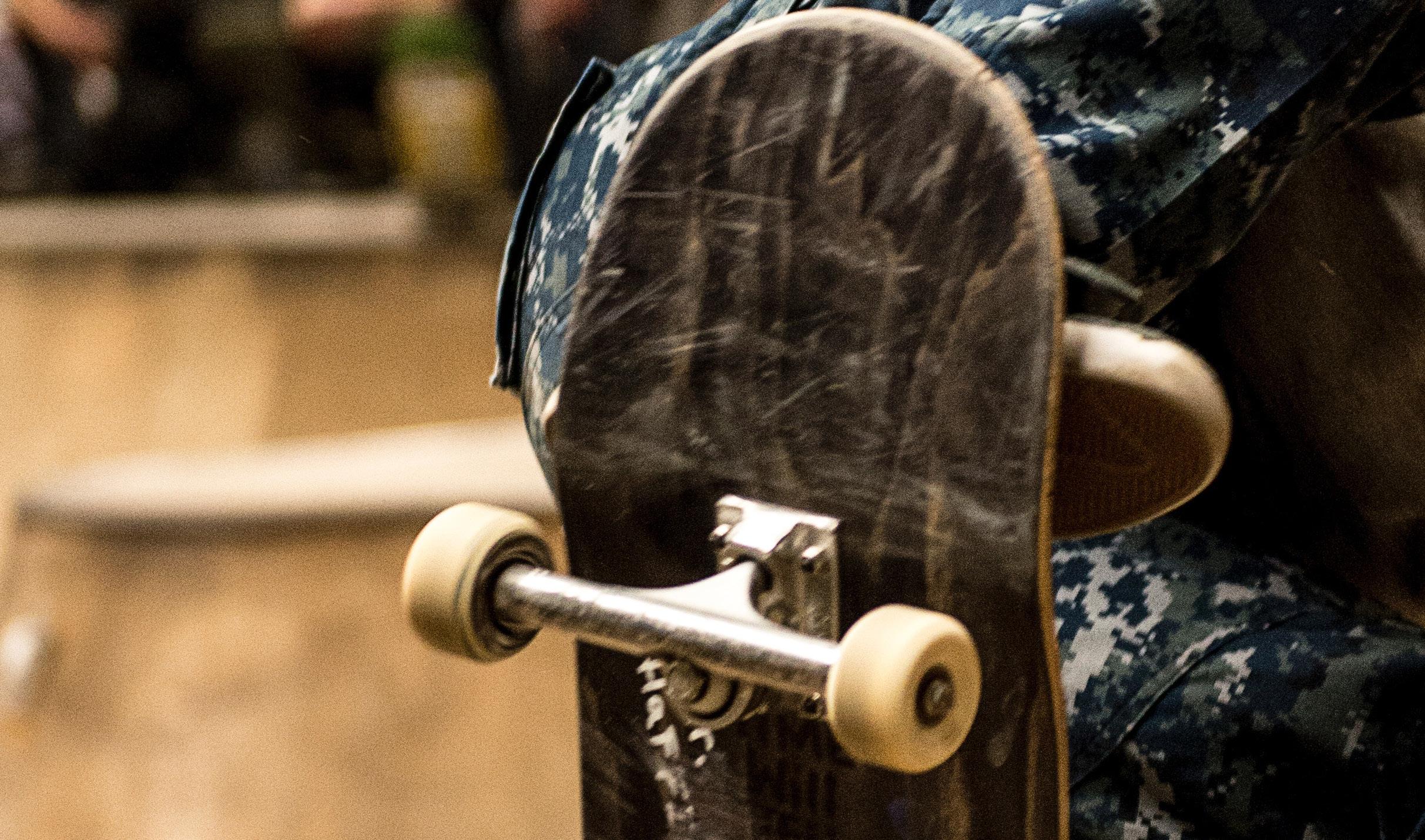
One of OUR PLACE’s basic principles is that young people in the outdoor space should be able to use the concerned space in their own way and feel comfortable there. By placing oneself in the position of young people, we understand their behaviour and presence far better. For this we need to look at the perceptions of the adolescent, inspired by
1) the basic principles of four people types (red / yellow / green / blue),
2) from a social (individualistic vs group-oriented)
3) a psychological (introvert vs extravert) dimension (BSR ®).
This characterising people by types is valid can be used for all ages and stages in life; everyone walks through a life path with various ‘colours’ in their lives.
The ‘ Discoverer ’ is an exuberant and lively adventurer, always looking for a challenge. Looks for boundaries and is not reluctant to cross these as well. Sees opportunities and possibilities everywhere. The environment must be a challenging one for these youngsters with possibilities for self-expression and creativity.
The ‘enjoyer ’ likes to surround him-/herself with
friends and family and attaches a great importance to friendship, harmony and conviviality. The feeling of belonging to a group and being connected with a larger whole is very important for these young people. Meeting each other and socialising together is the main reason for this group to enter a place with other youngsters.
The ‘striver ’ is a prestigious and expressive active person, always looking for power and success. Someone who continuously strives to compete with the rest and thus acquire his/her place in the group, both in terms of strength and knowledge. Because victory leads to more power and power is recognition. Status and prestige are important to these young people and they go rather far in this. The environment is seen by this group as one big competition field, with only 1 price: getting respect from the rest of the group.
The ‘rest seeker ’ is the most at ease knowing where he/she stands and no surprises arise. The feeling of safety and security is important for this youngster. In a group this person manifests him/ herself by adapting to the rest. In addition, the rest seeker is very fond of his or her privacy. A structured, defined environment gives this lifestyle type the feeling of peace and relaxation.
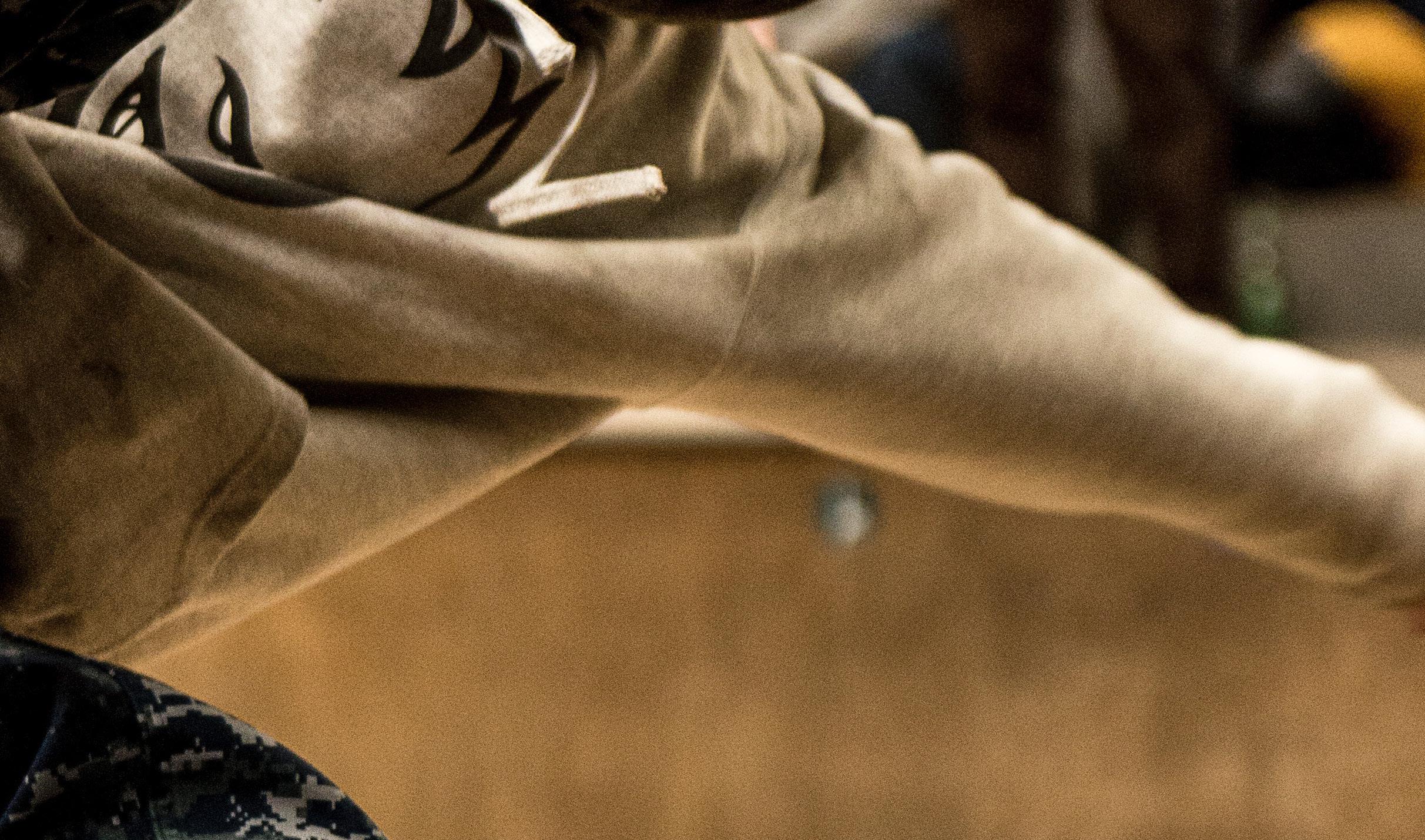
Discoverer
“I do not shy away from any challenge and go for different.something I Am creative and love adventure. I Also look for the edges in this. Some call me stubborn, but that does not matter to me. Just let me go my own way. “
“I am proud of who I am and I enjoy competing with others. I Love to keep control of everything. I have a can-do mentality and through working hard I get where I want to be. I am convinced of that! Status and recognition are important to me. I give up everything for that. I see life as one big competition.“
“Friends and family are the most important to me. I love to socialise and make new contacts easily. I am a real social animal. I learn by exchanging experiences. Why would you do everything alone, together you are strong! “
“Structure and stability, that is what I like. I do the things I do with great care and I am soberminded. Just act normal, that’s already crazy enough! And everything in due time please. First think, then act. I like to surround myself with a fixed group of people that I fully trust and whom I feel comfortable with.‘‘

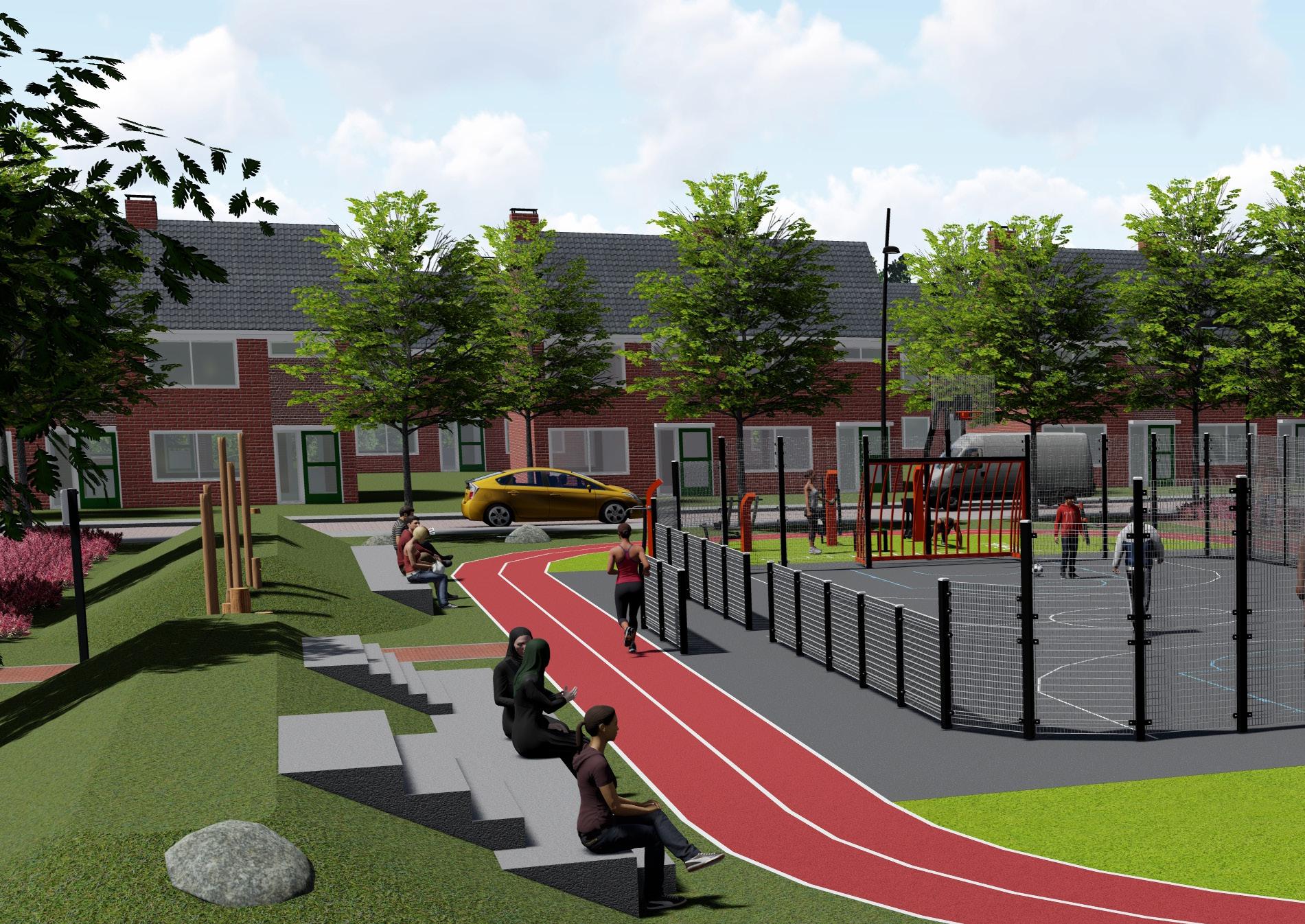
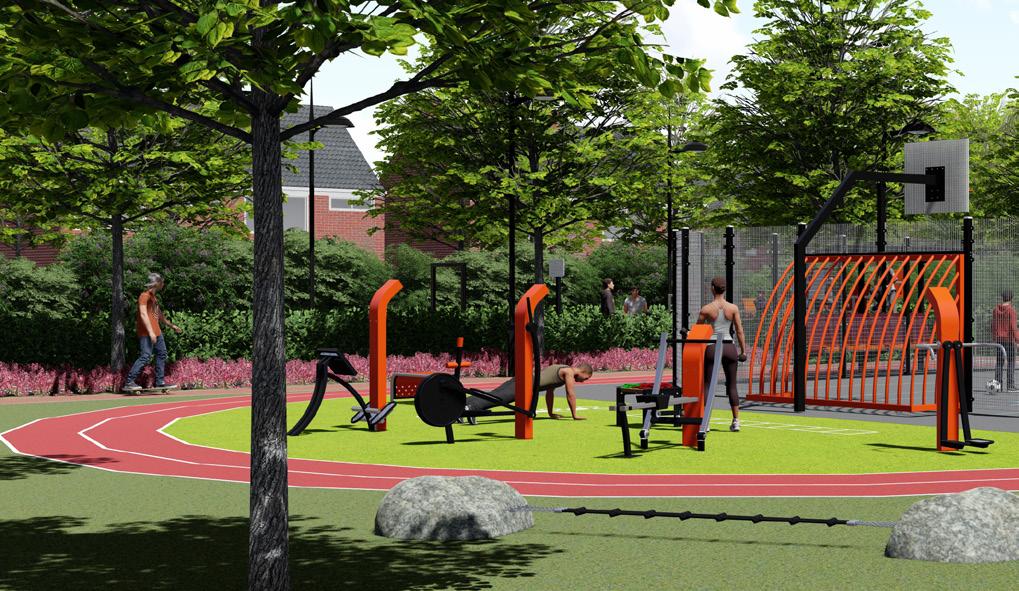


When you buy a house, next to all the facilities and the location of the house you also look at what the house itself looks like. Does the architecture appeal to you? This also applies to the hangout for young people. They spend a lot of time there, so the place must also be attractive; high quality, clean, undamaged and safe. Even though they can be sloppy and messy at times, youngsters are careful of their possessions and will not sit on a dirty surface with their designer clothes.
In addition, the facilities and amenities are also important here. Both the creative people and the outcast, as well as those who just to relax or chat with others should be able to enjoy themselves in the dedicated space. In the development of an OUR PLACE concept, the design guidelines of CPTED are used both visually (how will the place look like) and practically (in the provision of facilities at the location).

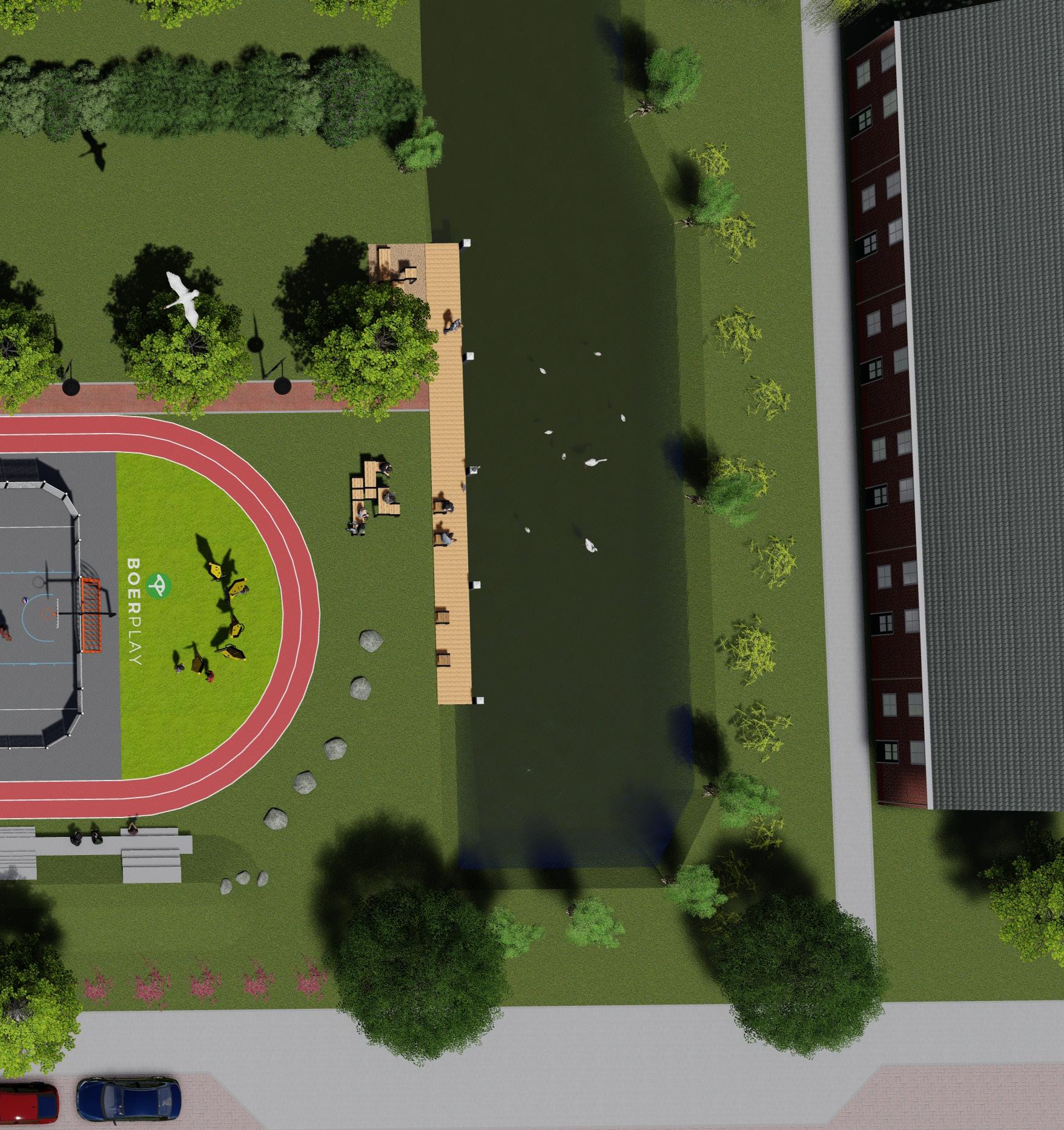

To see and be seen; this makes the venue a meeting place where people know each other but also learn to know themselves.
In the design we look for the right balance between visibility and the privacy needs of the youngsters. We bring conflicts of interest in line with the use of hip-high plants, trees with high crowns and hills with a height of up to 1 meter. This keeps the viewing lines present and creates protected, cosy spots.
Lighting is an important part of the layout, because a lot of meeting will take place in the evening hours. BOERchairish with built-in LED lighting gives an extra atmosphere to the hangout and increases visibility to both each other and the local residents.

This means communicating clearly: “what may I do here?”, “What is allowed here?”, But also “what is not allowed here?” Clarity is essential in a good design. Clear zoning and marking are therefore absolute necessities. It must be clear to the users which function the area has. When a user understands the space, this contributes positively to the feeling of peace, control and safety.
In the design penned out above we apply clear lines and bright colours to create different zones for different types of users.
Places to meet, to exercise, etc. Everything has a designated own colour, surface and a visual or material separation. We apply ‘speech bubbles’ in a playful and clear way to communicate what is expected of the users. That way everyone knows where he or she stands.
“I do not shy away from a challenge”

“Status and recognition are important to me. I see life as one big competition”
The attractiveness strongly determines the success of a place. This is about aesthetics (does it look nice, cosy and pleasant?), The state of maintenance (is it clean, is it well cared for?) And the range of activities (is there something to do for everyone?).
In order to ensure that the place caters something for everyone, we take the already described four types of persons into account in the design: the discoverer (red) is eagerly challenged. How far
can I go (until something goes wrong)? In how many different ways can I do it? Discoverers find their challenge in free experimenting. Balancing on the Slackline, free climbing on ZigZags. Challenge them and they will enjoy themselves.
The rest seeker (green) does not like to de confronted with surprises and feels comfortable in an environment that protects him/her and offers privacy. For the rest seekers, sheltered places on the edge of the site are made for meeting, contemplating and relaxing.
What good is a living room without comfortable seats? BOERchairish offers the solution. The sturdy, ergonomic and comfortable seating furniture offers a solution for meeting, lounging and stretching. Due to the different seat heights and positions it gives the ‘residents’ a good view at each other and the environment (and the environment back at them). In short: to see and be seen.
The seats are equipped as standard with LED lighting, which creates extra atmosphere and visibility in the living room. Put your phone on the table and the lighting responds to the beats of the music. With the specially developed software you can set in advance when the lighting switches on and off. Because every party needs to come to an end eventually.

PKNE048.01P
Chairish 1
Single seat furniture with seating area at a seat height of 145 cm.
8 - 88 years
1,9 x 0,7 x 2,1 m
PKNE048.03P
Chairish 3
Double-seat furniture with seating at the same seat height.
8 - 88 years
1,3 x 1,3 x 1,4 m


PKNE048.02P
Chairish 2
Seating furniture with two seats at 145 and 110 cm.
8 - 88 years 2,5 x 1,3 x 2,1 m
PKNE048.04P
Chairish 4
Seating furniture with seat at 145 cm.
8 - 88 years 1,4 x 0,7 x 1,7 m

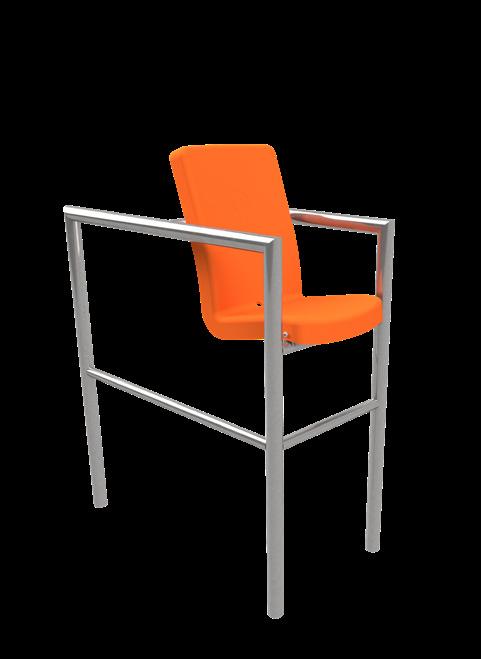

PKNE048.05P
Chairish 5
Double seat furniture with seating area at 75 and 145 cm seat height.
8 - 88 years
1,9 x 1,3 x 1,7 m
PKNE047.07P
Sound module
Chairish
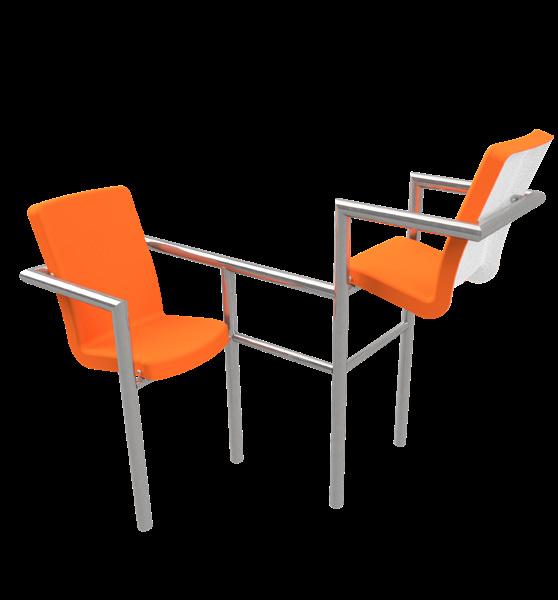
Put your phone on the table and the beats are transferred to the lights underneath the Chairish chairs.
8 - 88 years
0,6 x 0,6 x 1,2 m



The metal frames are made of stainless steel and the seats are made of polyester.
Includes a power source, where 1 power module can service a maximum of 14 BOERchairish seats.
The seats are available in other RAL colours upon request, with/without lighting and solar cells.
For developing the staircase concept BOERcorner we asked ourselves the question: why do groups of people really like sitting on a staircase? Is the meeting more informal that way? Do we want to surveil, or have an overview? Do we secretly require the need for a ‘monkey rock’ with height differences (read: status)? Just look around you, it really works that way. As a hangout for youngsters, a tribune or a creative
workplace, everything is possible with the playful and modular BOERcorner seating construction! The different frames can be combined to your liking. The three different heights (45, 75 and 105cm) correspond to seat height, table height and bar height. By keeping a part of the table open you also create opportunities for people to join in being dependent on a wheelchair. That is how the BOERcorner becomes useful for everyone!

PKNE035.010
Corner 1
Robust seating with 3 different heights.
all ages
2,8 x 1,5 x 1,1 m
PKNE035.030
Corner 3
Variant with 5 elements at uneven heights.
all ages
2,3 x 2,0 x 1,1 m
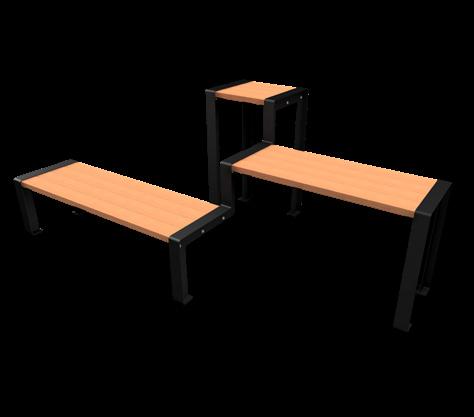



PKNE035.020
Corner 2
Variant with 5 elements at uneven heights.

2,8 x 1,5 x 1,1 m
PKNE035.040
Corner 4
Variant with 5 elements at uneven heights.
all ages
3,0 x 2,5 x 1,1 m all ages

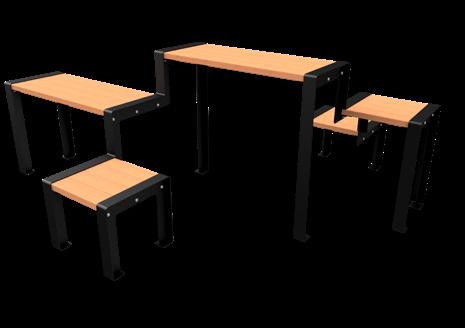

Simple, sleek and robust. With the different elements of BOERplacemakers you create a meeting place in a simple way. The elements can be used in different ways: as access, loose seats or as seat combinations, place markers or as a mini goal. The possibilities are endless.
If you wish to show the “house rules” in a sympathetic way, why not use the speech bubble. With the speech bubble the ‘rules and regulations can be communicated in a playful and unambiguous way. The texts have a positive approach. After all, for young people encouragement works 6x better than punishment!

PKNE001.010
Arch 98 low
Low arch as a framework for an outdoor living room, but also for sitting or lounging.
8 - 88 years
1,0 x 0,2 x 0,5 m
PKNE001.030
Arch 188 low
Low arch as a framework for the outdoor living room, but also for sitting or lounging.

PKNE001.020
Gate
Arch with a height of 2.1 m. Gateway to the outdoor living room.
8 - 88 years
1,3 x 0,1 x 2,1 m

8 - 88 years
1,9 x 0,2 x 0,5 m
PKNE001.040
Arch 188 high
High arch as a framework for the living room, but also for sitting, lounging or parking your bicycle.
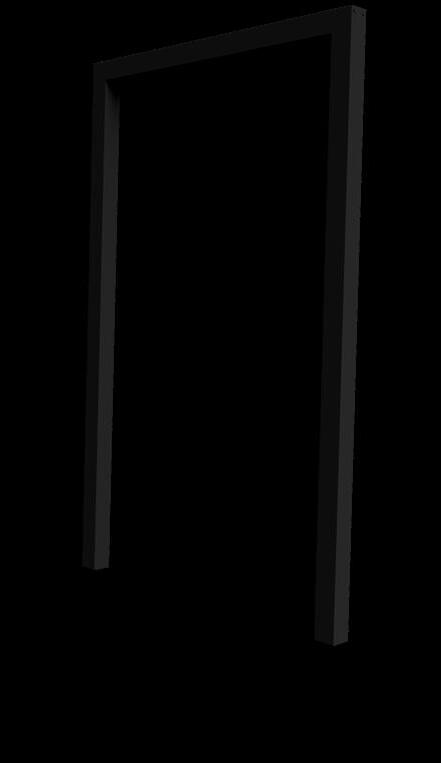

8 - 88 years
1,9 x 0,2 x 0,9 m
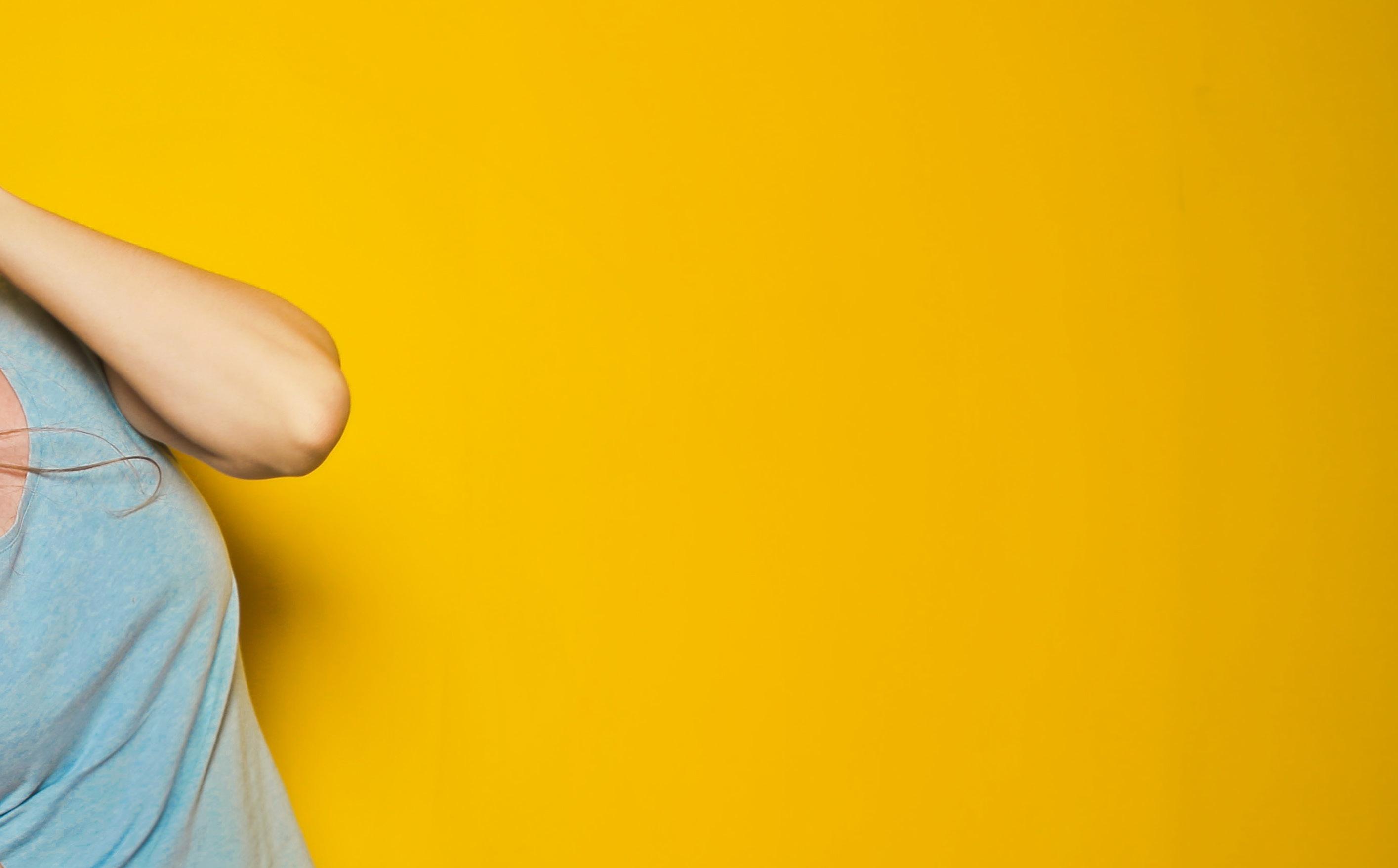
PKNE001.E90
Sympathetic communication of the house rules.
8 - 88 years
0,6 x 0,1 x 2,2 m
PKNE001.050
Corner low
Low corner element as a frame for the outdoor living room, but also for sitting or lounging.
8 - 88 years
1,1 x 0,8 x 0,5 m


PKNE031.724
Large sphere for balancing, sitting or jumping.
8 - 88 years
0,7 x 0,7 x 0,4 m
PKNE001.060
Corner high
High corner element as a frame for the outdoor living room, but also for sitting, lounging or parking your bicycle.
8 - 88 years
1,1 x 0,8 x 0,9 m
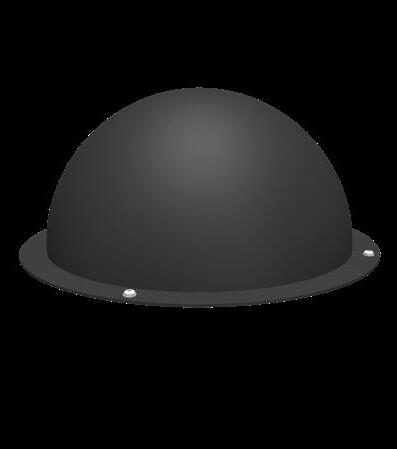

The steel frames are galvanised and finished with a highquality powder coating.
All variants are available with ground anchors (pivot bolts) or on concrete blocks.


Calisthenics is a form of training with your own body weight. You work simultaneously on strength, endurance, coordination and flexibility. And the nice thing is; everyone can do it!
The sport originated in ancient Greece where they did not yet have fitness equipment. “Kalos” means “Well” and “Sthénos” means “Power”. They used this training method in preparation for fighting. Later on it returned in their armies as fitness and strength training.
Also for you too! Because calisthenics is lowthreshold; you can start at any level. And you can
do it anywhere. In the open air you have all the freedom and can go whenever you want. With BOERcalisthenics allows you to train in the open air. And if you want to train more intensively, you can do that by repeating exercises more often or by doing more difficult exercises. And results are quickly noticeable. Calisthenics also provides social interaction and cohesion. It brings together different groups (of youngsters), who give each other tips about the exercises and share them via social media.
FITE002.502
Chin-up bar (Single)
single high placed bar for chin ups, pull ups and swinging.

FITE019.502
Chin-up bar (square)
Use one of the bars to train your upper arm muscles and shoulders.

Monkey bar (Single)
Use the beams or the horizontal ladder to train your upper arm muscles and shoulders.

Monkey bar (Double)
Use the beams or the horizontal ladder to train your upper arm muscles and shoulders.

FITE004.502
Sit-up bench
Train your abdominal muscles on this sloped bench.
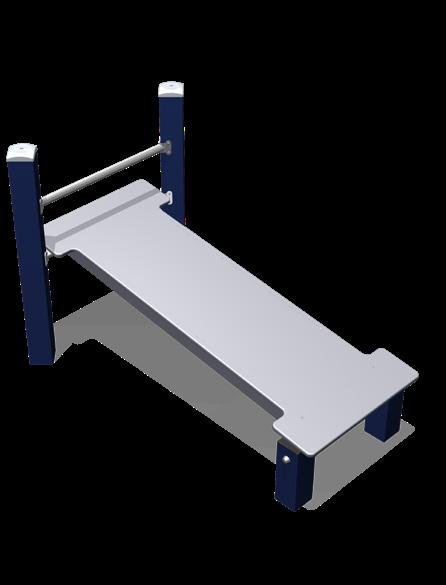
FITE005.502
Training bench
Train your abdominal muscles and more on this horizontal bench.

FITE010.502
Combination
Become totally fit with this combination. Work on your abdominal muscles or train your upper body.

FITE017.502
Horizontal bar (Trio)
Tumbling and swinging. Train together on 3 different levels on arm muscles etc.

FITE038.502
Combination
Become totally fit with this combination. Work on your abdominal muscles or train your upper body.

FITE047.502
Combination
Become totally fit with this combination. Work on your abdominal muscles or train your upper body.
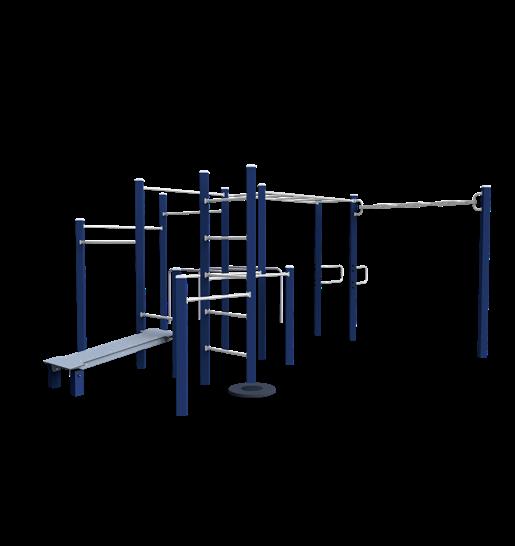
FITE021.502
Push up (Trio)
Pushing up on 3 different levels: Easy, Intermediate and Difficult.

FITE015.502
Combination
Become totally fit with this combination. Work on your abdominal muscles or train your upper body.

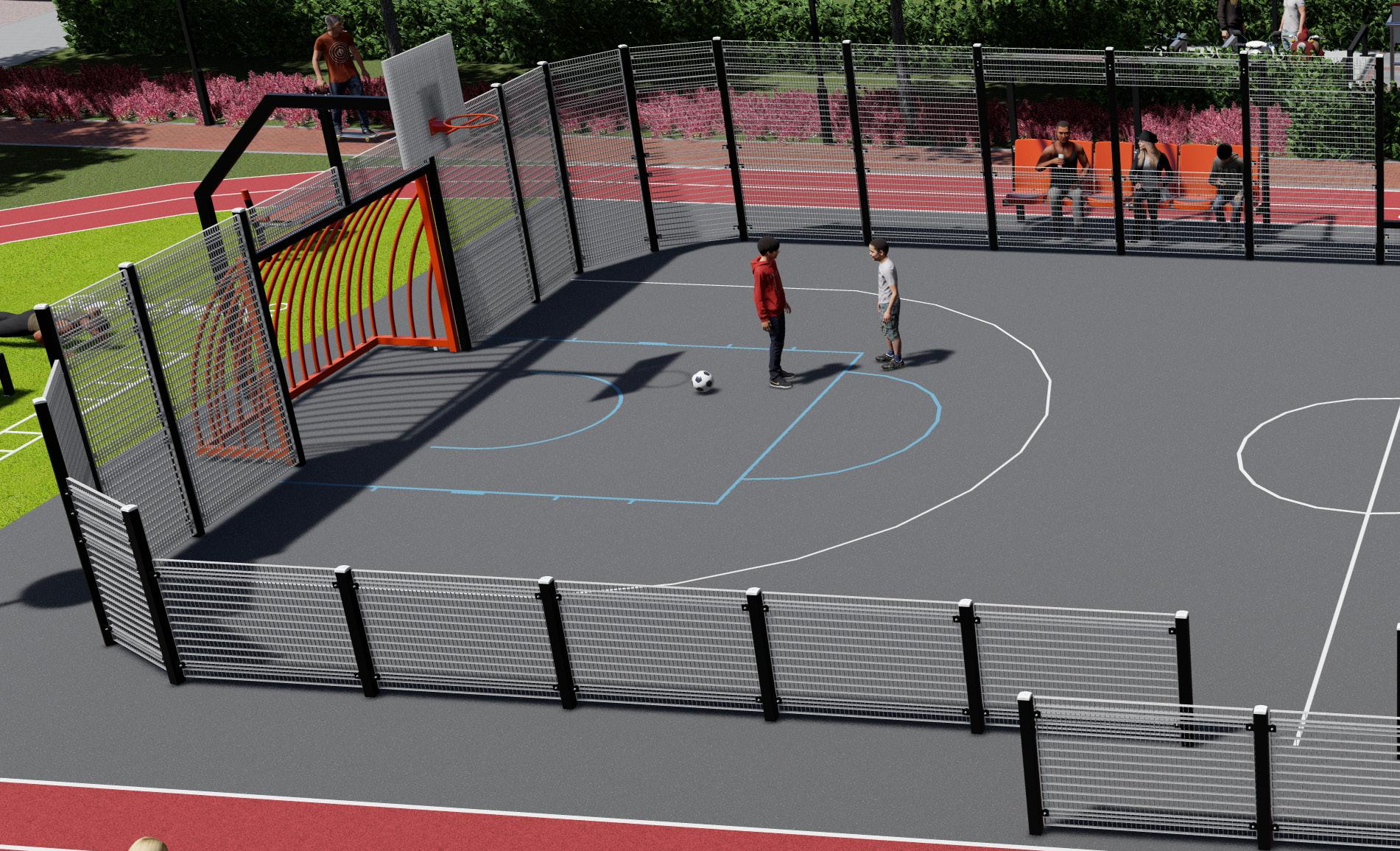
Our sports areas programme offers something for everyone and on every location, both in urban areas and in a natural environment. The sports areas are modular, based on the building box principle. Adaptable to any situation in both size and height. This contributes to the accessibility and visibility of the sports field and with it the manageability of the environment. The grids are
sound-friendly. This makes these sports areas very suitable for use in a residential area. In addition to the products offered, we can also further them dress up with baskets, dug-outs etc.
A complete sport experience that suits every environment.
SPTE230.063-OZG
Sports field 230
Low-noise sports cage with micro goals. For various types of surfaces.

Balancing to learn? Well yes! Because the body and brains of youngsters are still developing, both exercise and balancing remain important. Exercise stimulates the development of brains and the creation of connections between both brain halves. Adolescents are very inventive. Balance remains an exciting activity, because where do you maintain your balance and at which point do you let go? Jitters in your stomach are part of it. And let’s be honest: also the fun you are having when things go wrong. Both fun and challenging to do. All alone or in groups. These play activities based on balance are timeless and not age-restricted.

4 - 12 years

BBPE045.1A
bar
A traditional balance bar continues to attract.
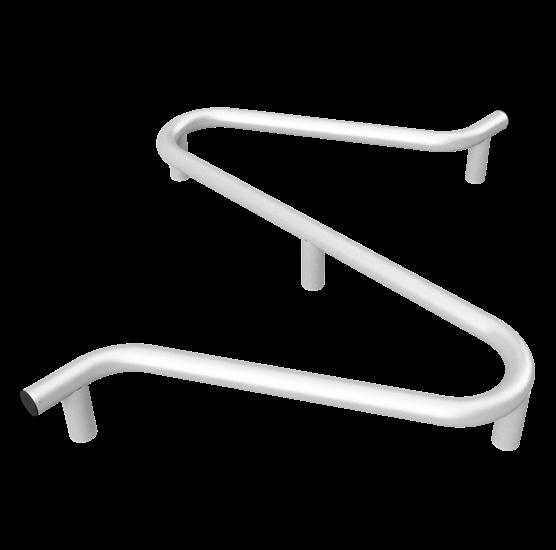
JGPE418.501
Springer beam
Challenge yourself over this moving balance bar.
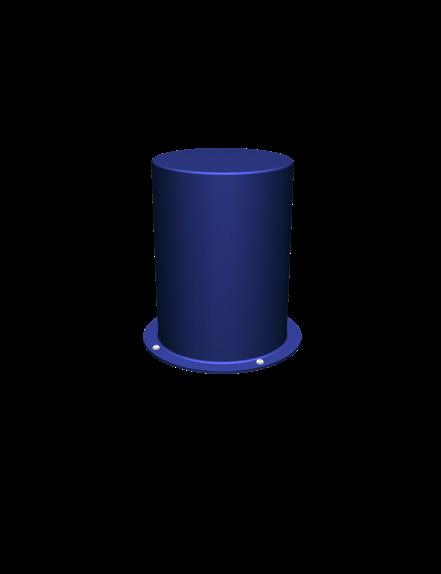
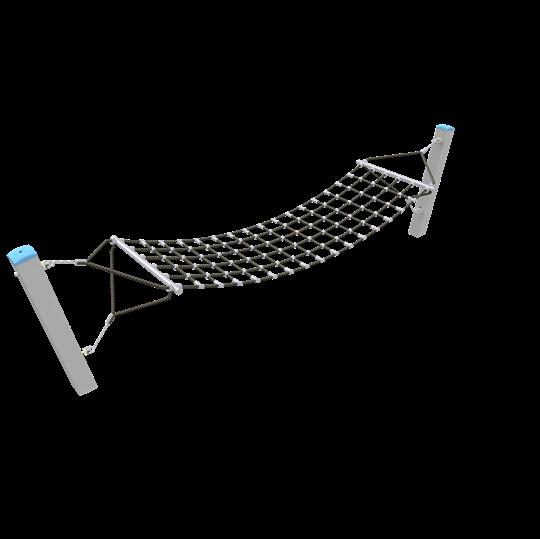
4 - 88 years
3,4
BBPE038.2R
Hammock
Relax and chill out with friends. Or just recover from the earlier exercise.

PNRE000.108
Balance Beam
It’s always a challenge to find your balance!
PKNE030.502
Ottoman
Polyester
Jumping, lounging, sitting, all possible on this ottoman. Available in various RAL colours.
BBPE046.2K
Leapfrog pole
Leapfrogging is fun! You can sit down or jump over this pole. Available in various RAL colours.
The preferred places of youngsters are those where one can hangout and where they can be seen. Safety, being together with friends and conviviality are central. A place where they can be and not get sent away. With the BOERmeet&greet programme you can create a central place for youngsters. In various styles, robust and sturdy. For use in both urban and natural areas. Ideal as an addition to an existing place or as an extension to exercise and sports. Offers shelter but designed in an open style, so that no trapped feeling or uncontrollable situations arise.

PKNE050.001

Pergola made of FSC certified Robinia wood, with seats. Ideal for placing in a natural environment.
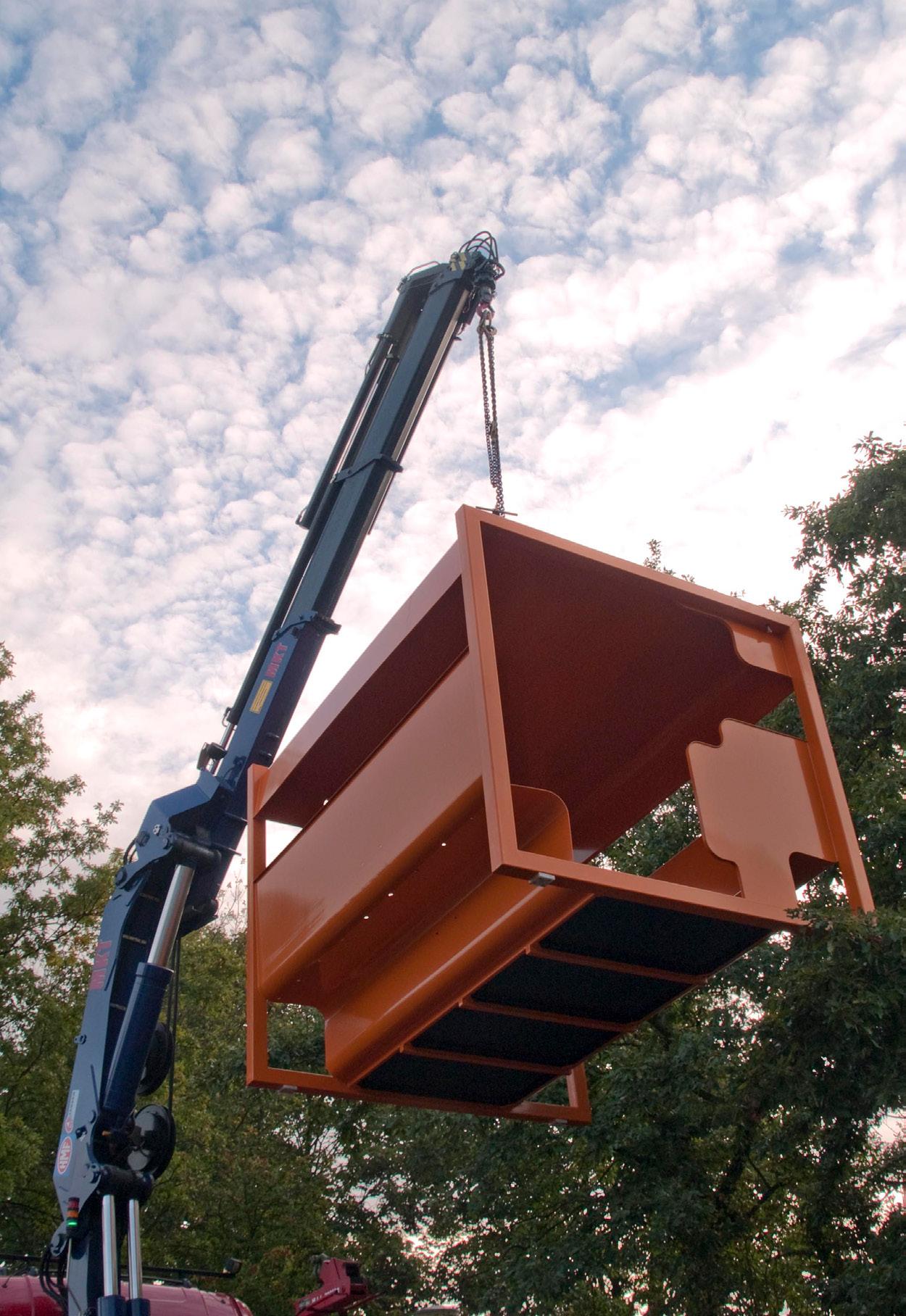

PKNE040.094
Open space for teens to meet. Easy to assemble and move.


JOPE001.204
Mobile YMP
Sheltered and robust place for young people to meet. Easy to assemble, but also to move.
PKNE040.091
Mobile YMP hexagon
Sheltered place for young people to meet and relax. In robust design.
Let yourself go completely and challenge both yourself and your friends on an obstacle course. Having fun and exercising at the same time. Exercising is not only fun but also good for brain activity and development. For youngsters indispensable when growing up to become adults. Did you know that obstacle runs actually started long ago? An escape technique was developed in the French army last century. This has been further developed into Parkours and Freerunning. At Parkours you go from A to B as fast as possible. If you prefer to do it gracefully and in your own way, freeruns are more for you.
Get set, go!

6 - 80
2,8
SOLE010.005-22
ZigZag set of 3 (2 XL and 1 XXL)
Group climbing elements with different levels of difficulty.
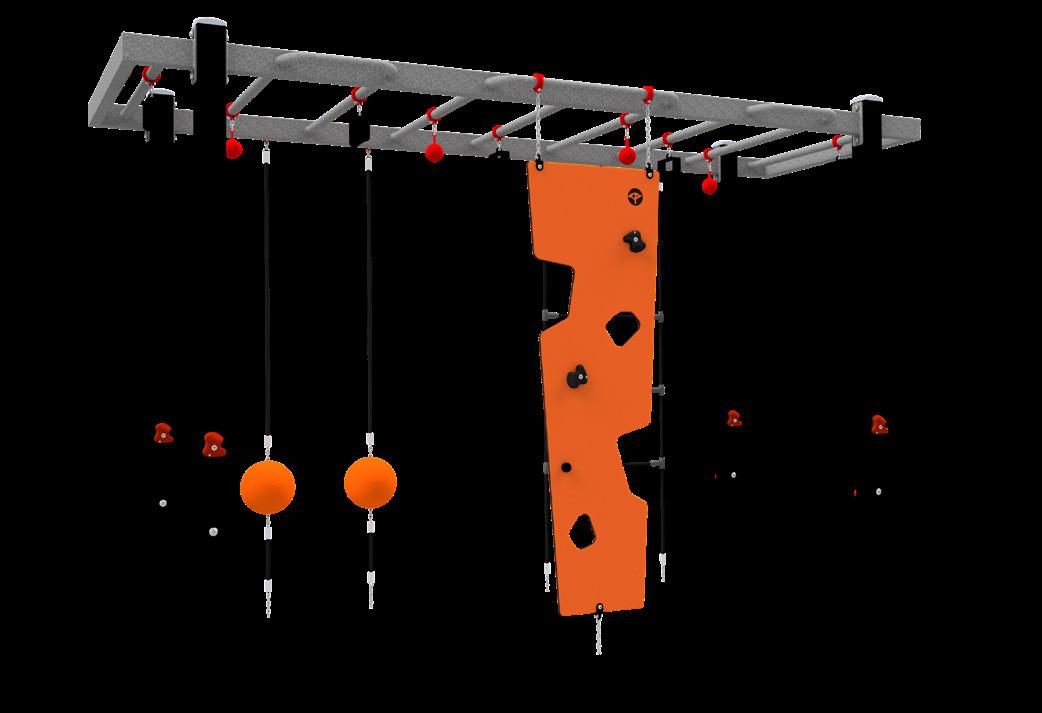

SOLE010.004-22
ZigZag set of 5 (1 XL and 4 XXL)
Group of climbing elements with different levels of difficulty.
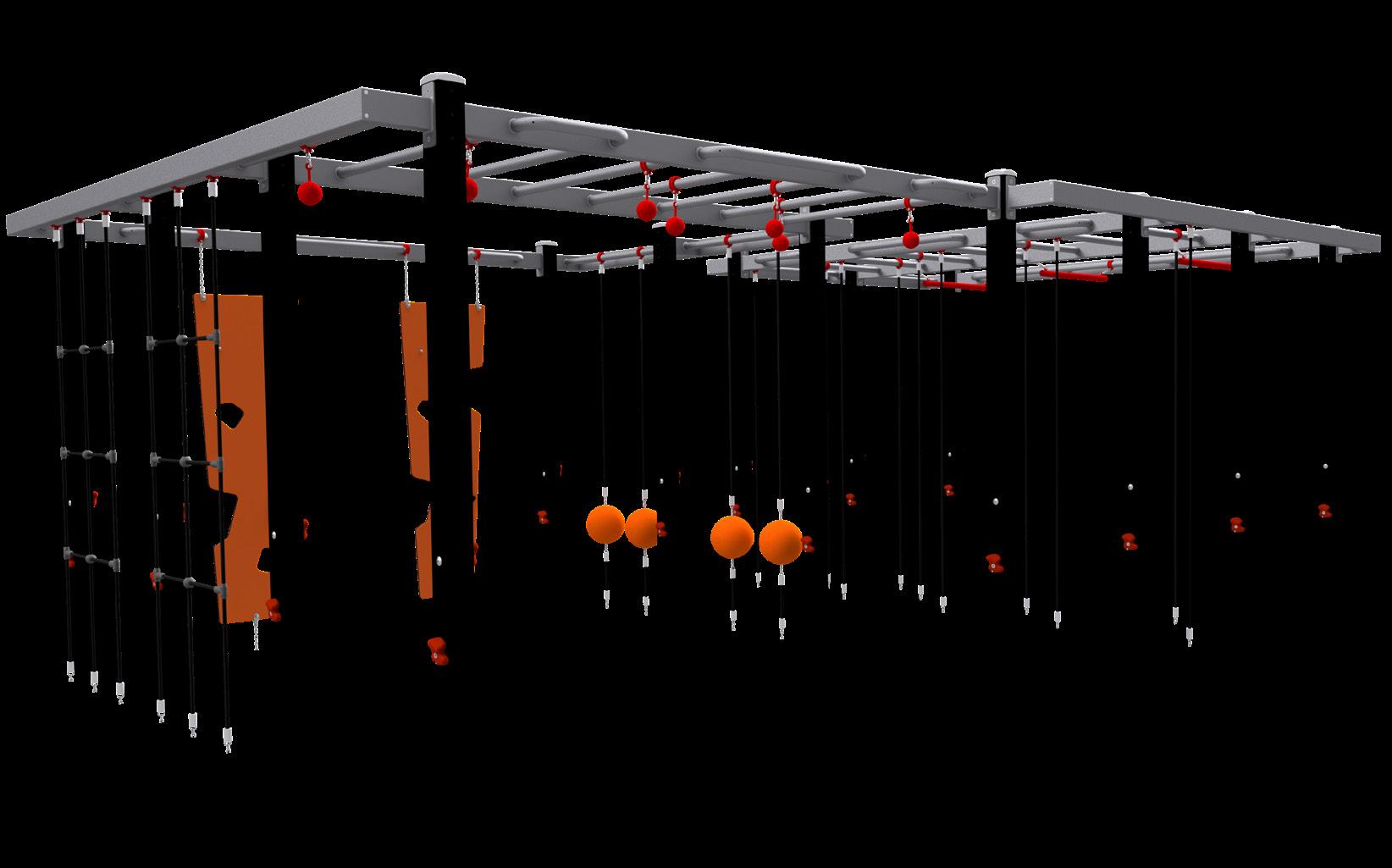

FITE403
FITE401
BOERchallenger
This obstacle course with various elements originates from Japan. Choose your own route and with it your own level of difficulty. Take the challenge!

‘FLY LIKE AN EAGLE. MOVE LIKE A


export@boerplay.com www.boerplay.en
Netherlands
Postal code 10 4255 ZG Nieuwendijk
+31 183 40 23 66
Belgium
Sneeuwbeslaan 4 - bus 303
2610 Antwerpen (Wilrijk)
+32 471 68 10 33
Germany
Allee 24/26
33161 Hövelhof
+49 5257 9 28 96 28
facebook.com/boerplay.international linkedin.com/company/boerplay-international
Colophon:
This brochure is a publication of BOERplay We reserve the right to make printing and typographical errors and changes in this brochure. Nothing in this publication may be reproduced in any form or by any means without the written permission of the publisher. VE24042025
